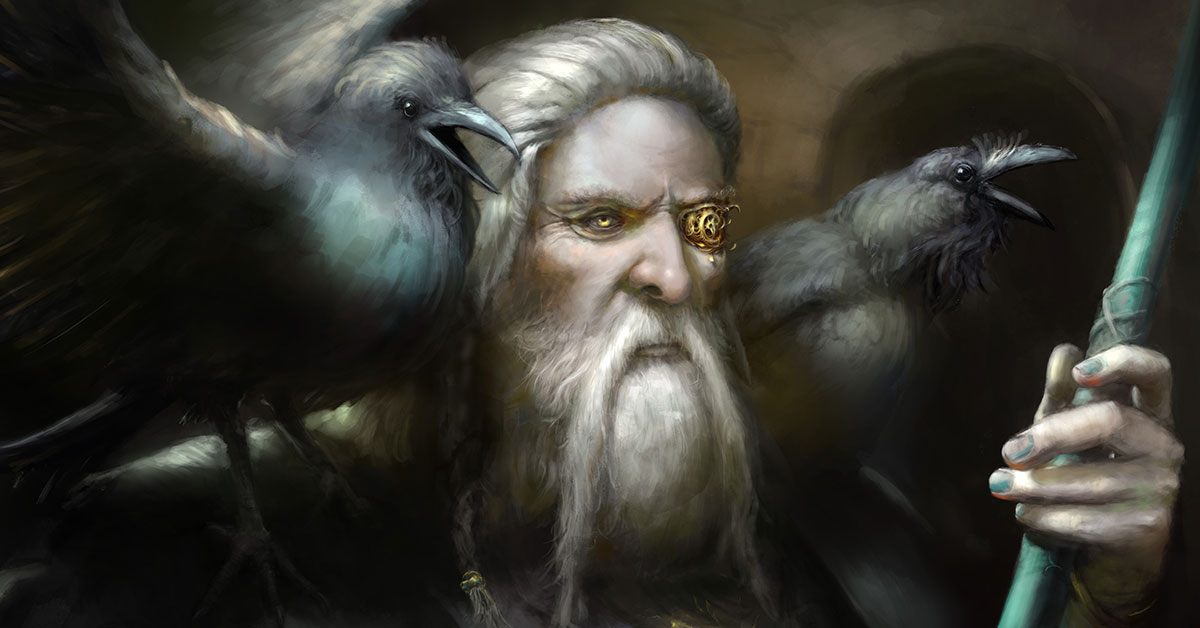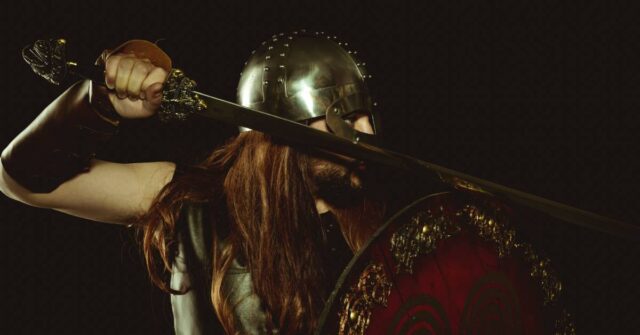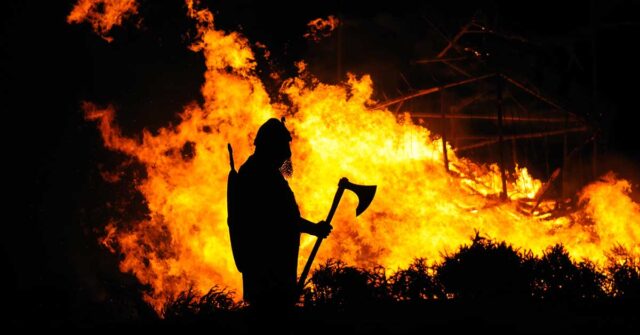When we think of Norse mythology, images of fierce warriors and epic battles under the cold, northern skies often come to mind.
But who did the Vikings call upon when they needed the favor of the gods in war? This journey takes us deep into the lore of the Norse, where gods wield power over battle, justice, and the fate of warriors.
Introduction to Norse Mythology
Norse mythology, a rich tapestry woven with tales of gods, giants, and heroes, served as the backbone of Viking belief and culture.
Far from being a monolithic set of beliefs, it’s a complex network of stories and characters, each with their own roles and attributes.
The Pantheon of Norse Gods and Goddesses
At the helm of Norse cosmology stand the Aesir and the Vanir, two families of gods known for their endless power struggles and eventual truce.
The Aesir, with Odin at their head, symbolizes war and wisdom, while the Vanir represents fertility, wealth, and foresight.
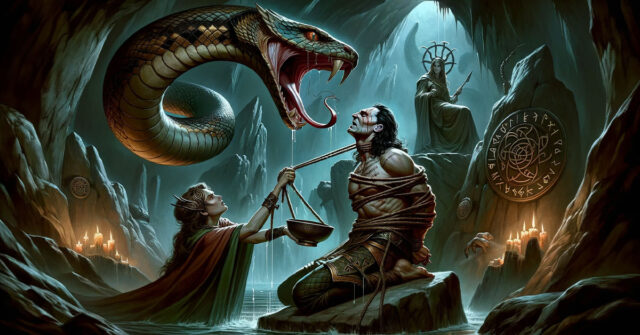

Understanding the Viking Worldview
The Vikings viewed their world as a dynamic place where gods, humans, and all living things shared connections.
Life was seen as a cycle of creation and destruction, overseen by deities who could be both benevolent and wrathful. This worldview deeply influenced their approach to war, valor, and honor.
The Complex Nature of Warfare in Norse Culture
Warfare, for the Norse people, wasn’t just a means to an end but a vital aspect of life that tested a warrior’s bravery, honor, and favor with the gods.
The line between legend and reality is often blurred, imbuing battles with a sacred significance.
The Role of War in Viking Society
Wars and raids were avenues for social advancement, wealth, and glory.
A successful raider could gain status, wealth, and even ascend to the ranks of the legendary Einherjar, warriors chosen by Odin to fight at his side at Ragnarok.
Myths and Legends Surrounding War
The sagas are ripe with tales of divine intervention in battles, of gods walking among men to tip the scales of fate. These stories served as both inspiration and cautionary tales for the warriors of the North.
Identifying the Norse God of War
In a pantheon filled with deities embodying various aspects of life and death, three gods stand out for their associations with war: Odin, Tyr, and Thor.
Each brings a unique perspective to the Norse understanding of war and valor.
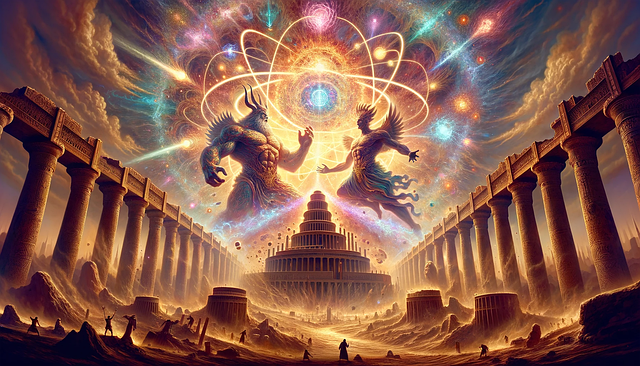

Odin: The Allfather and His Warrior Aspect
While Odin is often celebrated for his wisdom, he is also the god of war and death.
A complex deity, he craves knowledge, power, and the glory of fallen warriors, whom he collects for the final battle of Ragnarok.
Tyr: The God of War, Justice, and Oaths
Tyr, the one-handed god, represents the honor and legal frameworks within which Norse warfare operated.
His sacrifice of a hand to the wolf Fenrir symbolizes the weight of oaths and the balance between bravery and recklessness in battle.
Thor: The Thunder God and Protector
Though not primarily a god of war, Thor’s role as a defender against the forces of chaos made him a favored deity among warriors.
His mighty hammer, Mjolnir, symbolizes the protection of humanity and the gods themselves.
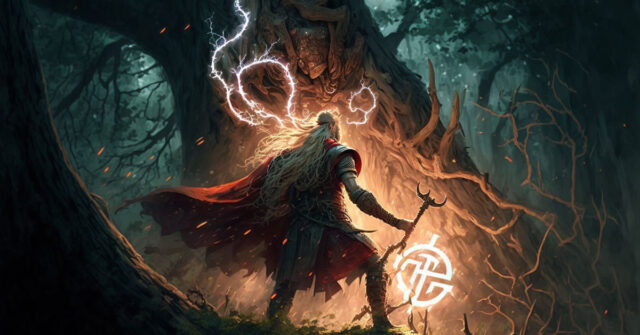

Comparative Analysis: Odin, Tyr, and Thor
Odin’s quest for slain warriors, Tyr’s sacrificial courage, and Thor’s protective fury paint a picture of the Norse gods’ multifaceted approach to warfare.
Each deity reflects a different aspect of the Viking warrior’s world: wisdom, honor, and strength.
Odin: The Supreme Warrior
Odin’s desire for knowledge and power leads him to the battlefield, not just as a god to be appeased, but as an active participant in the destinies of men.
He is the patron of rulers and the elite warrior class, seeking those who fall bravely in battle to join him in Valhalla.
Odin’s Attributes and Symbols
Known by many names and wielding the spear Gungnir, Odin is often accompanied by his ravens, Huginn and Muninn, symbols of thought and memory, and his wolves, Geri and Freki.
These companions underscore his roles as a god of wisdom and war.
Odin in War: Myths and Stories
The sagas are full of tales of Odin’s involvement in battles, often donning disguises to sway the outcome.
His quest for the Einherjar is a testament to his preparation for Ragnarok, where the ultimate battle will take place.
The Valkyries: Odin’s Choosers of the Slain
The Valkyries, warrior maidens who serve Odin, select those worthy of Valhalla. Their choice marks a warrior’s valor and ensures their place in the final battle against the forces of chaos.
Tyr: The One-Handed God of War
Tyr’s legend, especially his sacrifice of a hand to Fenrir, highlights his role as a deity of justice and bravery. This act reflects the values of sacrifice and trust inherent in Norse culture and warfare.


The Legend of Tyr and Fenrir
This myth underscores the importance of sacrifice for the greater good, a theme resonant with the warrior’s path.
Tyr’s willingness to place community and order above personal safety mirrors the expectations placed on Norse warriors.
Tyr’s Role in Norse Warfare
In battles where honor and the keeping of oaths were as critical as victory, Tyr’s presence was invoked to sanctify agreements and inspire courage.
His influence extended beyond the battlefield, into the very fabric of Norse law and governance.
Symbols and Worship of Tyr
Tyr’s symbol, the Tiwaz rune, represents the balance and justice that were essential in Norse society and warfare.
His worshipers sought to embody these principles, aspiring to fairness in dealings and bravery in conflict.
The Role of Thor in Battles
Thor, with his immense strength and control over thunder and lightning, served as a protector of both gods and humans.
His involvement in battles was believed to shield the forces of order from the chaos of the giants.
Thor’s Might and the Defense of Asgard
Thor’s battles with giants are legendary, showcasing his role as Asgard’s defender.
His hammer, Mjolnir, not only symbolized this protective power but also consecrated marriages and other significant events, tying him deeply to the lives of the Norse people.
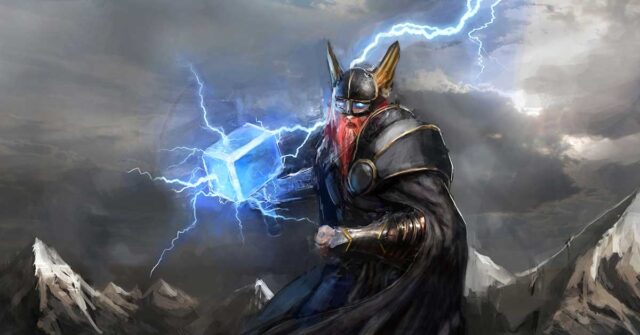

Thor’s Weaponry and Battles
Besides Mjolnir, Thor possessed a belt of strength and iron gloves, tools that enhanced his already formidable power.
These items, central to his identity, highlight his readiness to defend the cosmos from threats.
Warfare and Tactics in Norse Mythology
The Norse approach to warfare was not just physical but deeply spiritual.
Strategies, weapons, and the very act of going to war were imbued with sacred significance, reflecting a belief in the divine influence over human affairs.
The Vikings at War: Strategy and Weaponry
Viking tactics on the battlefield were as varied as their gods.
From the fearsome berserkers, warriors who fought in a trance-like fury, to the shield-wall tactic, their methods were practical yet deeply symbolic, reflecting a blend of earthly skill and divine favor.
Sacred Battles and Their Mythological Significance
Many battles were seen as reenactments of mythical struggles, with warriors embodying the gods themselves.
This spiritual dimension lent an aura of sacred duty to the act of warfare, elevating it beyond mere survival or conquest.
Rituals and Sacrifices: Seeking Victory in War
Victory in battle was never taken for granted. The Norse sought the favor of their gods through rituals and sacrifices, hoping to tip the scales of fate in their favor.
Invoking the War Gods: Practices and Prayers
Before embarking on raids or battles, Vikings performed rituals to honor the gods of war, offering sacrifices for strength and protection.
These ceremonies were crucial, reflecting a deep intertwining of faith and martial prowess.
The Role of Seidr and Magic in Warfare
Seidr, a form of Norse magic, was employed to foresee outcomes and influence events.
Practitioners, often women known as volvas, held significant status, as their abilities could predict and, in some beliefs, alter the course of battles.
Comparative Mythology: Norse Gods of War vs. Other Pantheons
The Norse gods of war share similarities with deities from other cultures, yet their distinct characteristics and the values they embody speak volumes about the Viking way of life and their view of the cosmos.
Similarities and Differences With Greek Ares and Roman Mars
While Ares and Mars represent the brutish and strategic aspects of war, respectively, Norse gods like Odin and Tyr reflect a combination of strategy, honor, and the cyclical nature of life and death.
This difference highlights the unique Norse blend of war as both a physical and spiritual endeavor.
War Deities in Egyptian, Hindu, and Aztec Cultures
Comparing Norse war gods with those from Egyptian, Hindu, and Aztec mythologies reveals a shared understanding of war as a divine force that shapes the world.
Yet, each culture’s gods embody different aspects of war, reflecting their unique worldviews and values.
Legacy of the Norse Gods of War
The impact of Norse mythology, especially its gods of war, extends far beyond the historical Viking age, influencing modern culture, literature, and even our understanding of heroism and valor.


Influence on Modern Culture and Media
From literature to movies and video games, the Norse gods, particularly those associated with war, continue to inspire and fascinate.
Their tales of bravery, sacrifice, and the pursuit of wisdom resonate with audiences around the globe.
The Enduring Fascination With Norse Mythology
The rich tapestry of Norse mythology, with its complex gods, epic sagas, and profound themes, continues to captivate the imagination.
Its influence on modern storytelling and popular culture is a testament to its timeless appeal.
Conclusion: The Multifaceted Gods of War
In the pantheon of Norse mythology, the gods of war stand as multifaceted figures, embodying the virtues and complexities of the Viking warrior spirit.
Through their stories, we glimpse a world where war is both a path to glory and a profound, sacred duty.
As we delve into these ancient myths, we uncover not just tales of gods and heroes, but reflections on valor, wisdom, and the human condition.

